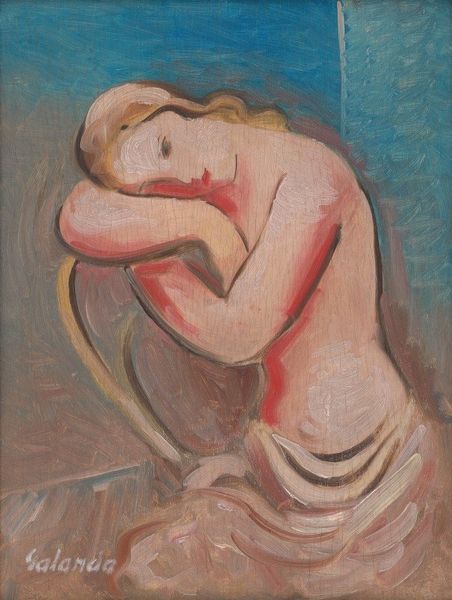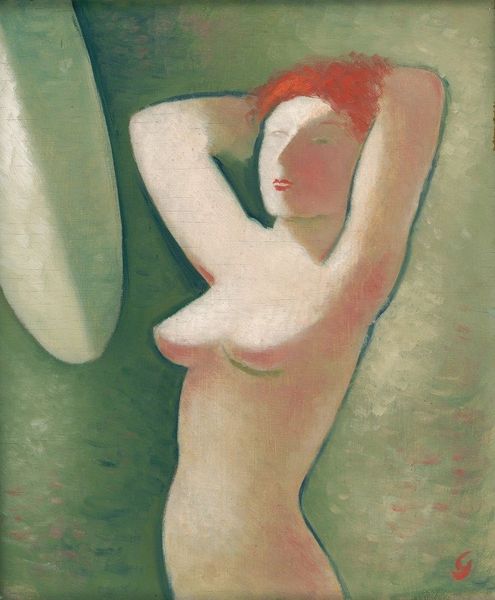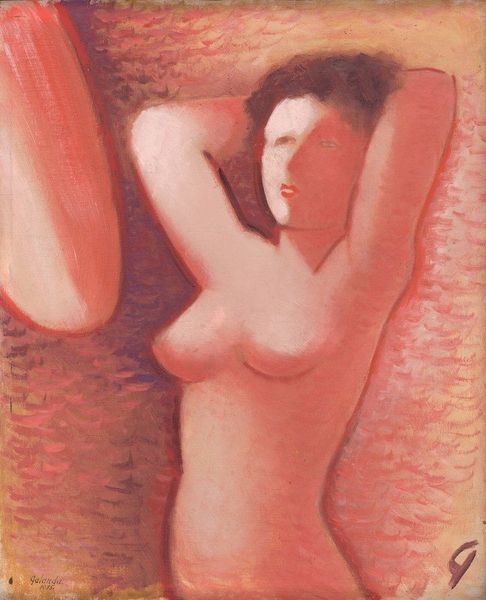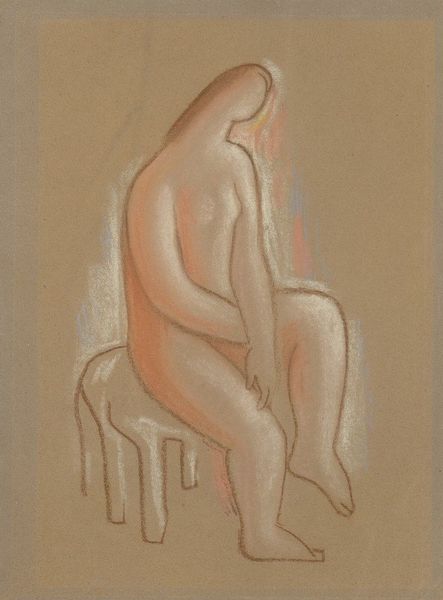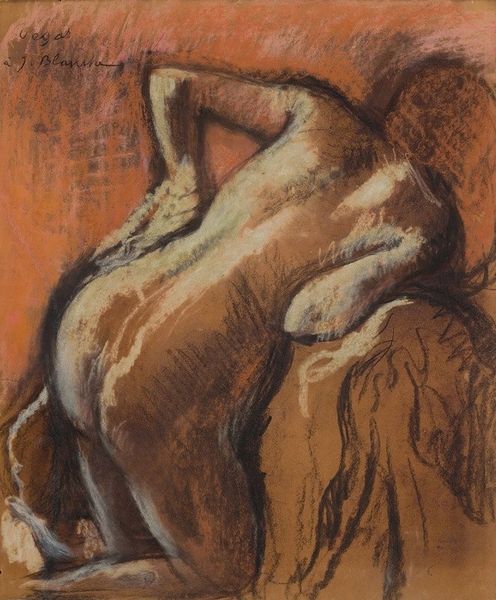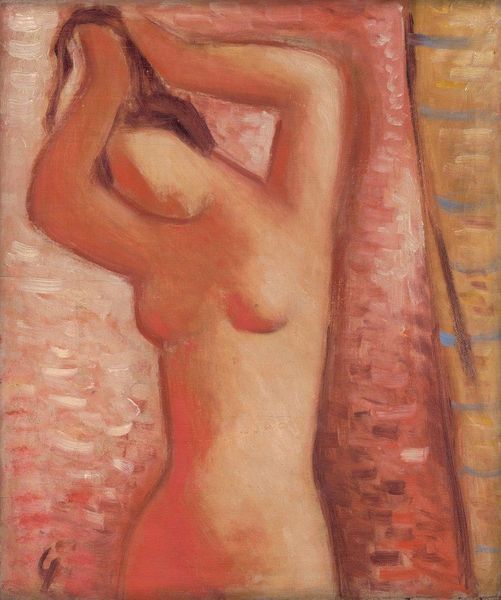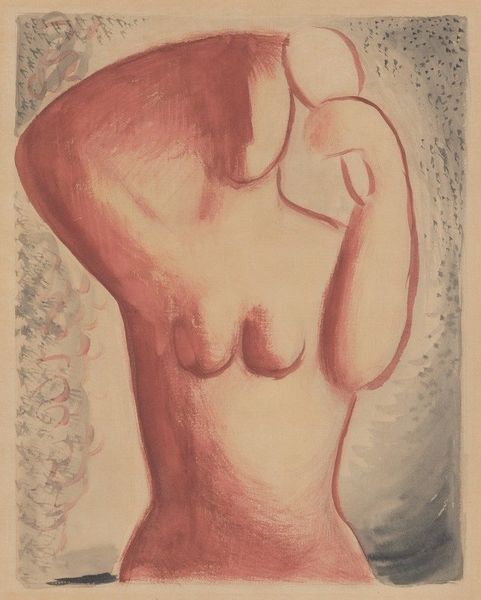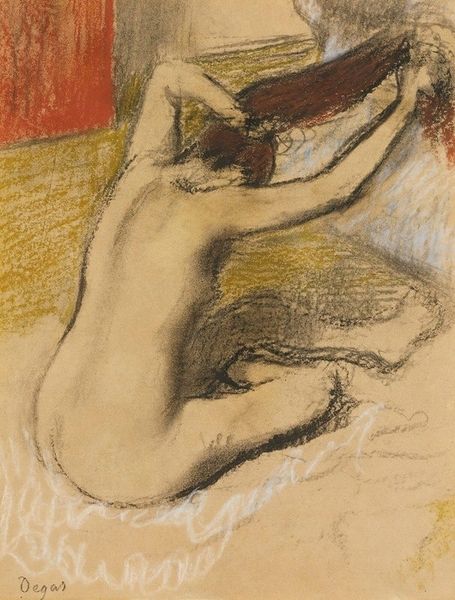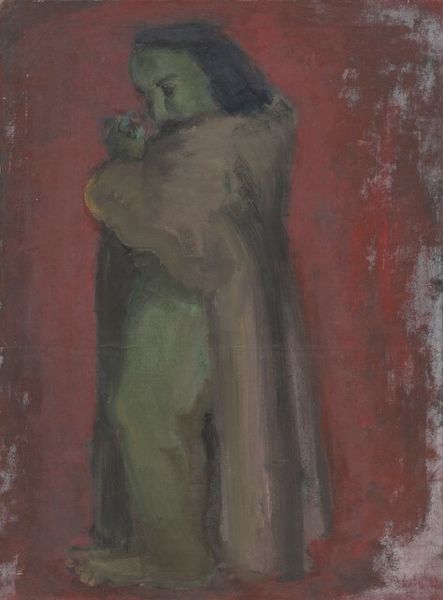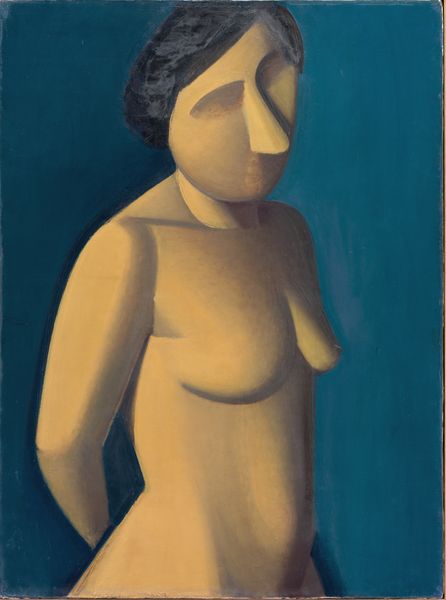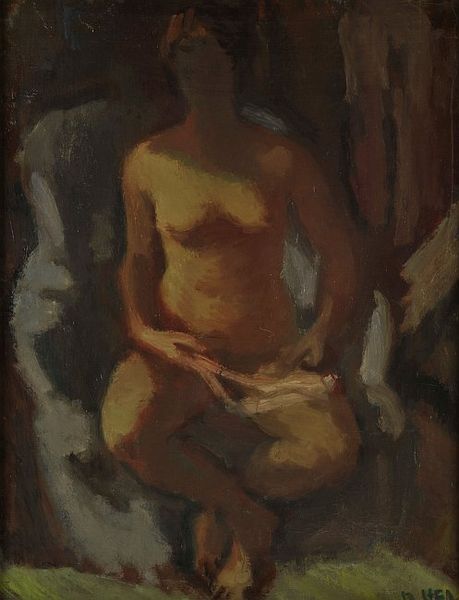
Copyright: Public Domain: Artvee
Editor: This is "Facing Mirror," an oil painting created in 1933 by Mikuláš Galanda. I find the form both intimate and fragmented, like a memory struggling to be fully realised. How do you interpret this work? Curator: Galanda’s piece speaks volumes through its fractured imagery. Notice the mirror itself – less a perfect reflection, more a clouded memory. What do you think the fragmented representation suggests about identity? Editor: Perhaps a sense of being unsure of oneself, or seeing different versions of oneself at different times? Curator: Precisely. The doubling – the figure and the reflection – hints at the multifaceted nature of self-perception. The symbol of the mirror throughout art history often represented vanity, or even truth, but here, in Galanda’s hands, the reflection seems uncertain, as if wrestling with deeper psychological complexities. The gentle palette adds to a muted emotional impact. Do you feel the colors are symbolic? Editor: Maybe the muted colors evoke nostalgia, or perhaps a sense of detachment, as though viewing the scene from afar. It’s interesting how Galanda plays with the classical subject of the female nude, transforming it into something much more modern and psychologically charged. Curator: Yes, the traditional subject becomes a vehicle for exploring inner turmoil, questioning traditional notions of beauty. This highlights the ability of symbolic images to continuously morph meanings across eras. The painting acts as a silent conversation between past and present. Editor: This really made me rethink how artists use recognizable forms to hint at something deeper about who we are and how we perceive ourselves. Curator: Indeed! It emphasizes that even the simplest image holds within it layered cultural and psychological significance.
Comments
No comments
Be the first to comment and join the conversation on the ultimate creative platform.
